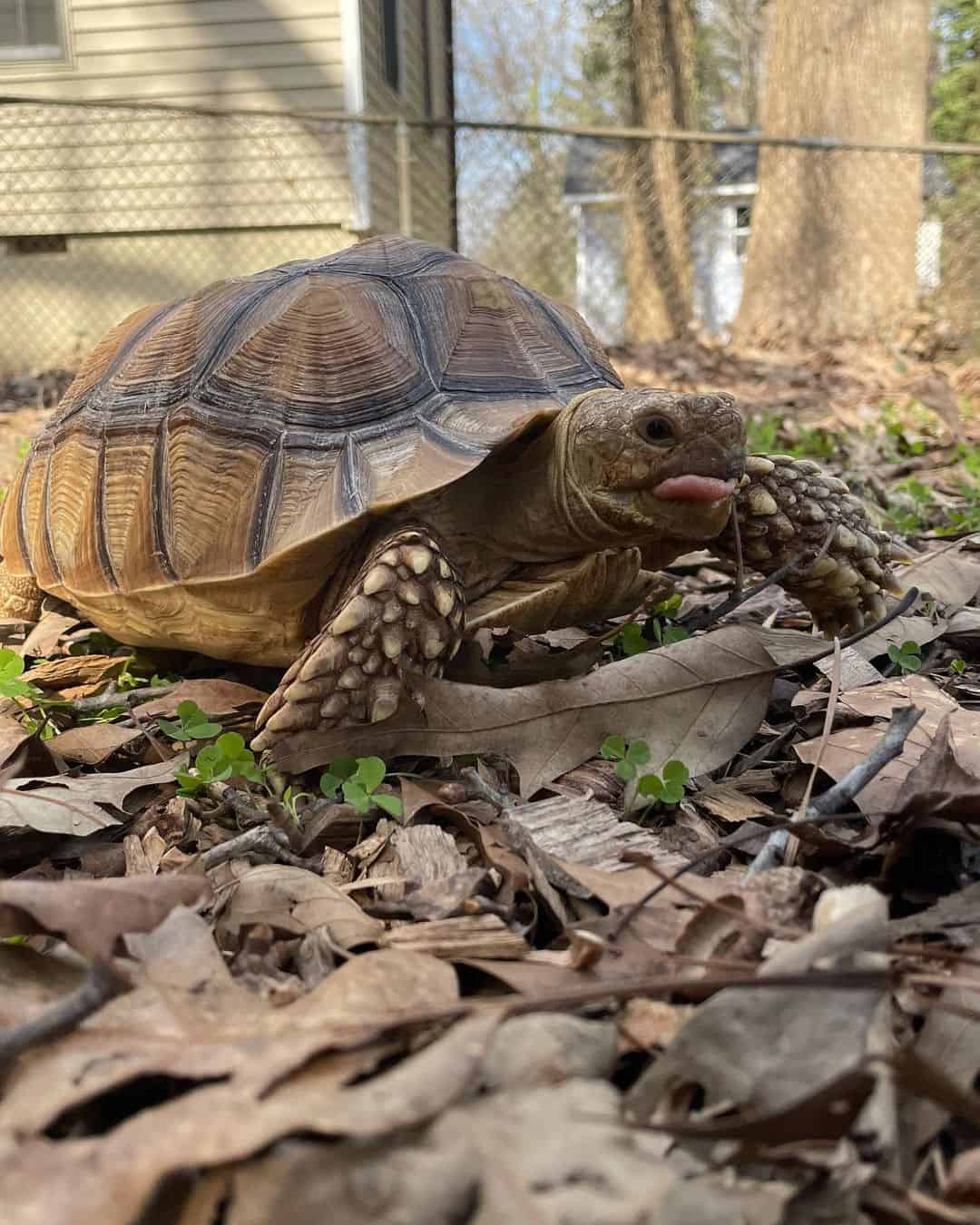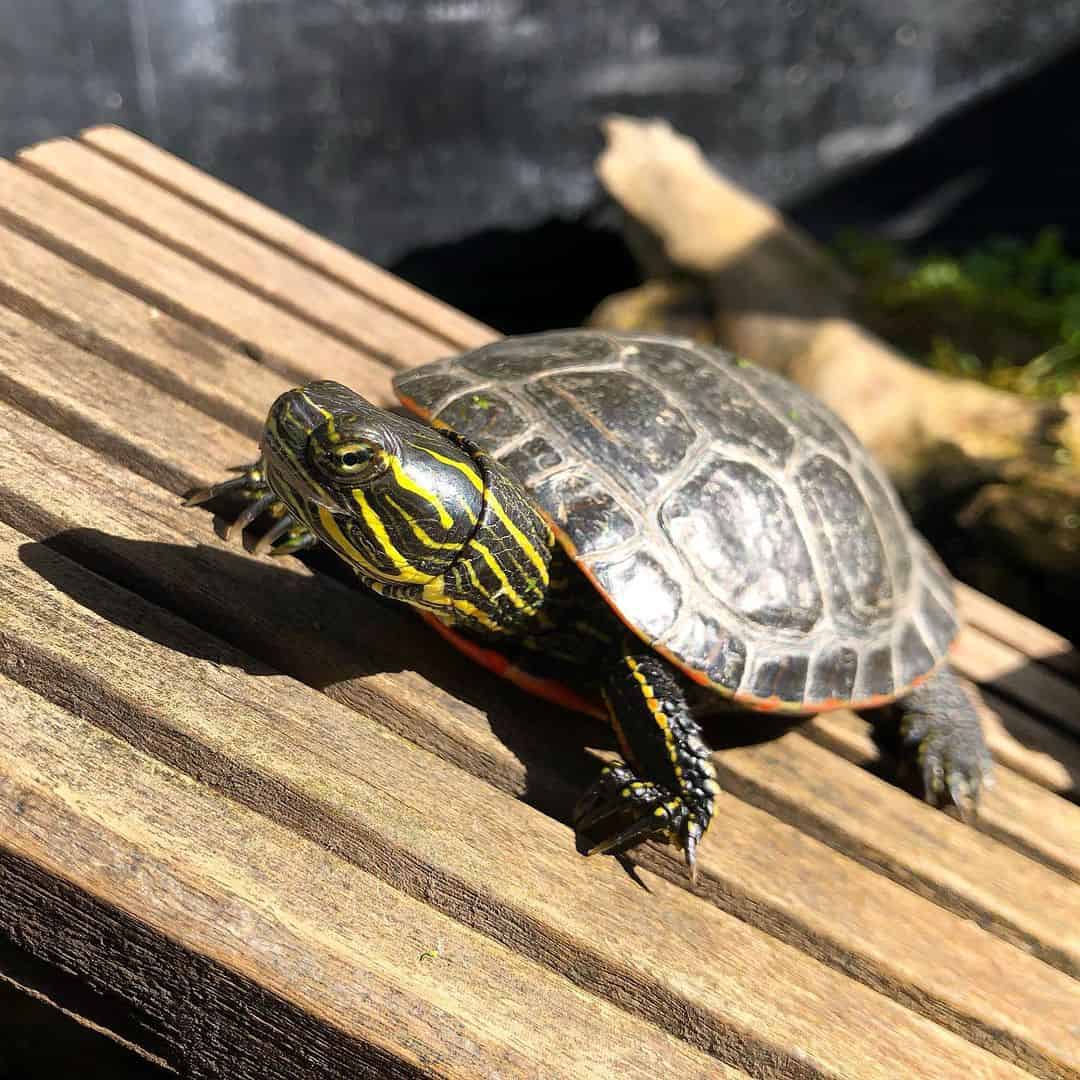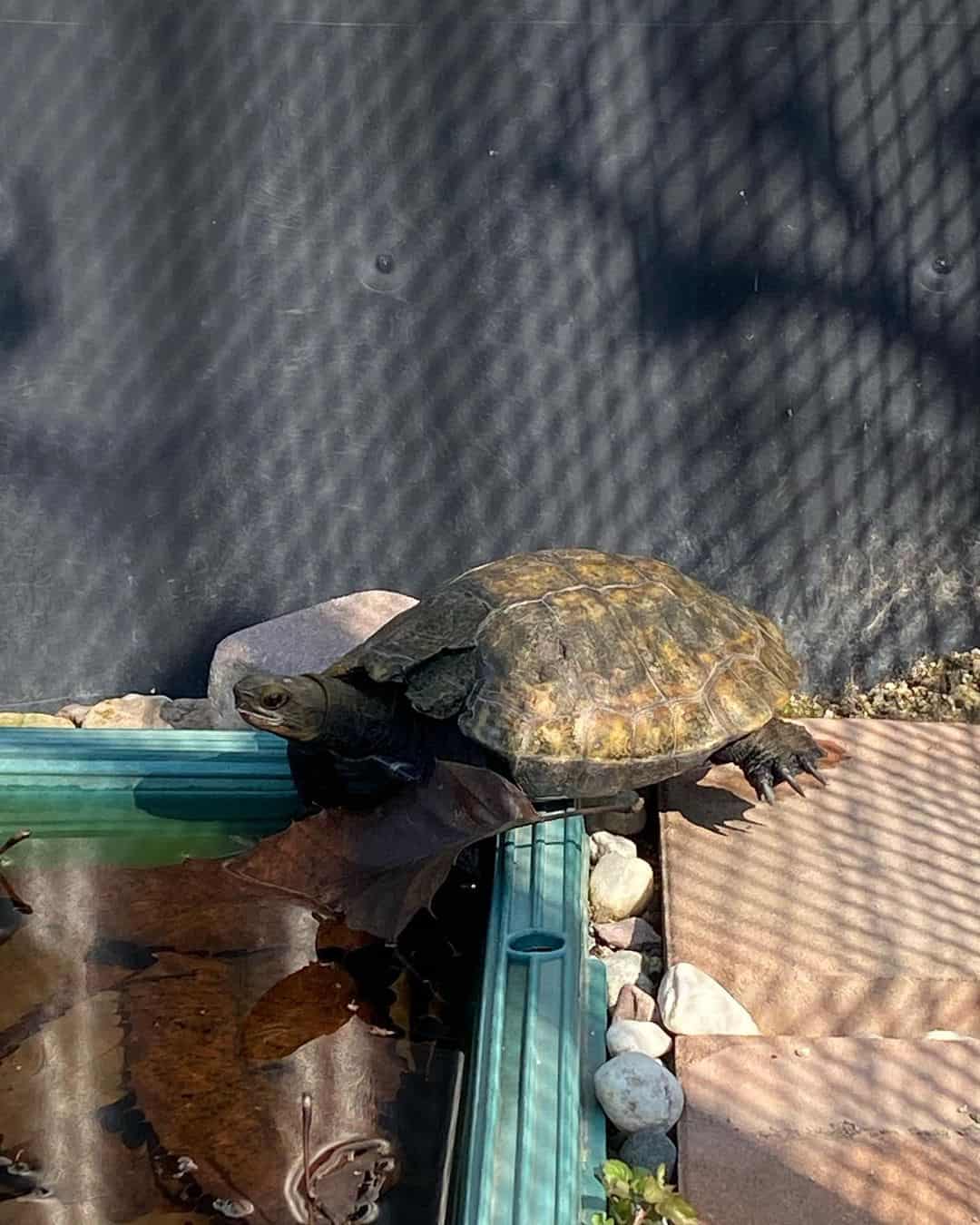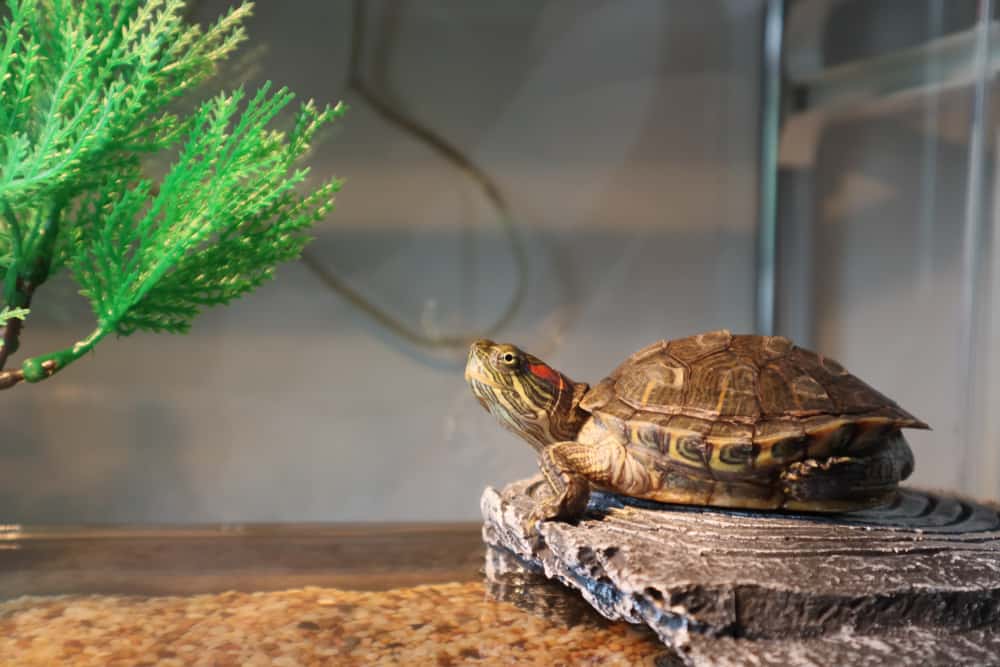You might have heard that turtles make great pets, and that is definitely true. Quiet, undemanding, and just generally chilling wherever they may be, their relative lack of maintenance makes them perfect for people who might not have a lot of time for the usual canine or feline pets.
Going through the pet store, you might want to know how much a turtle costs. Well, that’s a tricky question to ask, because you can get a turtle for cheap, but their maintenance is nothing to scoff at. In this article, we will take a look at not just the prices of turtles as well as the potential maintenance costs you need to prepare for.
We’ll also throw in some information about tortoises, just in case you prefer them.
How Much Does a Turtle Cost?
Much like other pets, turtles can be relatively cheap, but if you are trying to keep an exotic species, you will need to dish out a substantial amount of money. You’ll find that almost all turtles will come around $0-$1000.
Pet stores will almost always have their most common turtle pets at around the $20-$100 range. The price often varies not just with species, but also their age and size. A juvenile turtle will often come cheaper than an older one, due to the care invested in the latter.
On the other hand, breeders are the best people to buy unique turtles from. They are generally experts on turtle care, and they come complete with information on how to take care of these turtles. You will have to spend more for their expertise, but if you’re going to spend north of $200 for a turtle, you will want all the maintenance tips you need.
Common Species of Turtles as a Pet

There are around 250 species of turtles and tortoises in the world, and there are 10 of them which are commonly kept as pets. Here are some of them:
1. Red-Eared Slider
The red-eared slider is the most common turtle pet species. They are often more sociable and more active compared to their other turtle cousins, and they are widely available at the lowest price range. Their name comes from a streak of red that runs across their ear area.
They often come in a length of 6 to 8 inches, although they can reach up to 20 inches. Most people keep them indoors in a large aquarium that has a good filtration system since they can get quite dirty. They also need to sunbathe a lot since they cannot regulate their own temperature.
2. African Sideneck Turtles
Where most turtles retract their heads fully back into their shells, the African sideneck turtle instead tucks their relatively long necks sideways, hence their name. They are also generally bigger, coming around 7 to 12 inches long.
Perhaps the most common reason for getting one of them is their unique facial features. Their round eyes and mouth fixed into a smile may make them quite the cuter species to keep. Additionally, their shell is flatter than most, different from the dome shape that you might be more familiar with.
3. Eastern Box Turtle
Quite the sharp opposite of the previous one, the Eastern box turtle sports an unusually high dome shell but comes at a shorter length of around 5 to 7 inches.
They do have stricter needs and requirements that need to be attended to, especially with their living spaces. However, they can come in many colors: vivid orange and yellow markings mar their dark brown shell, with their skin coming in a similar variation.
4. Western Painted Turtle

If you want a more attractive-looking turtle than the Eastern box turtle, then the western painted turtle might be more up your alley. Flatter and just as long as red ear slider turtles, they can be often confused together if not for the fact that the painted turtle sports bright red or orange coloration on its plastron (lower shell) and outer edges of the upper shell.
Their own requirements are similar to the red-eared slider. In fact, the western painted turtle is the second most popular pet turtle in the United States. However, you might want to check if you live in Oregon or Indiana: the former forbids these turtles as pets, and the latter prohibits their sale.
5. Mississippi Map Turtle
If you like your turtles small, then the Mississippi map turtle might be worth your time. Growing only up to 10 inches (females) or 5 inches (males), they are great if you don’t have the space for a big aquarium indoors. They’re also called the sawback turtle because of the serrated edges of its shell.
However, these turtles don’t exactly like human interaction as much, and they will get stressed more easily than most turtles. Fortunately, outside of the usual considerations, map turtles are quite hardy turtles.
6. Common Musk Turtle
Another turtle that’s averse to human touch, the common musk turtle is another small aquatic turtle that is popular with those that have space limitations. They grow even smaller than the map turtle at 2 to 5 inches, which usually puts them off the radar of the 4-inch US law, which states that turtles with upper shells shorter than 4 inches are illegal to be sold.
The common musk turtle is known to release a stinky scent when they feel threatened, hence their name as well as their other name, the stinkpot turtle. They also have quite a long neck that can easily reach their front legs, so you might want to lessen handling as much as possible.
Turtle as a Pet

When you want to keep a turtle as a pet, most of your costs will not be on the turtle itself. Rather, you have to spend an upfront cost for the turtle tank which these creatures will spend the majority of their time on. There are also other important considerations, such as lighting.
Additionally, you might also want to get your turtles from turtle breeders: they would be more than happy to guide you through the life of a turtle owner and the different accessories or fixtures that you will need to keep your turtle healthy.
1. Turtle Tank
A turtle tank is oftentimes an aquarium designed specifically for turtles. The first thing you have to consider for the tank is its size. You need to get a tank that gives your turtle enough space to swim around since they are mostly aquatic and spend more time in the water.
You usually want a 40-gallon tank for most turtles. If space is an issue, you can go as small as 30-gallon tanks. To find the exact size that’s great for your turtle, it’s best to do some asking around fellow owners of the same turtle species.
Although keeping them in an outdoor pond is definitely an option, using a turtle tank will make for better living conditions that you can tailor according to their needs. If you insist on using an outdoor enclosure, you might want to see if the turtle can survive living in your climate.
2. Filtration System
Since your turtle will be staying in the tank for the most part of its life, the tank will eventually get dirty. It doesn’t help that turtles are naturally messy creatures, so you need to ensure that their tanks are clean to avoid diseases.
Having a good filter for your turtle tank will immensely help in the maintenance of your tank. It will keep your tank clean and habitable for your turtle. You do need to make sure that your filter matches the size of your tank, or else your system might not function well, or last long.
3. Lighting
Most turtles are poikilothermic, which means that they cannot regulate their own temperature and instead rely on the temperature of their surrounding environment. Because of this, turtle tanks need to have equipment for regulating tank temperature.
You might be surprised to know that turtles need three kinds of lamps: basking lamps, UVA lamps, and UVB lamps. In the wild, turtles greatly rely on the sun for temperature regulation, production of vitamin D3, and assistance in using certain nutrients. These lamps help replicate the light that they usually get from their natural habitat.
We can write a whole article about turtle tank lighting alone, but for now, you need to know that you need to supply these lights (often separately) so that your turtle lives a comfortable and healthy life in the tank.
4. Vet Visits
Turtles are often posed as low-maintenance pets, but that does not mean that they do not deserve a visit to the veterinarian. Turtles require a certain amount of care and attention for them to live long lives.
Although many reptile enthusiasts, real life or online, are willing to provide advice when your turtle is acting weirdly, a specialized vet clinic will get you far more mileage in ensuring the health of your pet turtle.
Conclusion
Turtles are adorable reptiles that you can get in pet stores for a cheap price. However, a turtle does not only come with its own price tag, but with the requirements for care and attention that it needs. The $20 turtle you bought comes with it a heap load of other responsibilities.
If you want your turtle to live a long life, you’ll find that putting in the effort past the purchases you got them can go as long as 30-50 years.
